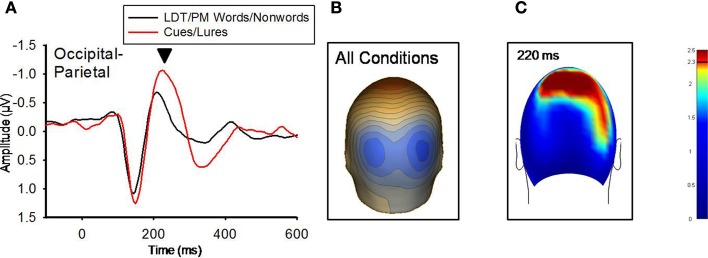Figure 3.
(A) Grand-averaged ERP waveforms for LDT/PM words/nonwords and Cues/Lures for the 220 ms component (marked with black arrow). Occipital-parietal ERP waveforms were derived by averaging sensors from the significant cluster that resulted from the planned contrast. Negative is plotted up. (B) A topographical voltage distribution averaged within time windows centered on the peak latency of the 220 ms component. Positive isopotential lines are in red, negative isopotential lines are in blue. Isopotential line scale is: 0.64 μV/step. Due to similarities in topographic distributions across conditions, they are averaged and presented as one voltage topography. (C) A plot of t-values (absolute value taken) over the head surface indicates the sensor clusters for which there were significant effects between LDT/PM-words versus cues and LDT/PM-nonwords versus lures at 220 ms post-stimulus. The two effects are presented together due to the high similarity between the two comparisons, suggesting red PM-items were preferentially processed at this time point. The critical t-value (t = 2.3281) is marked on the scale.

